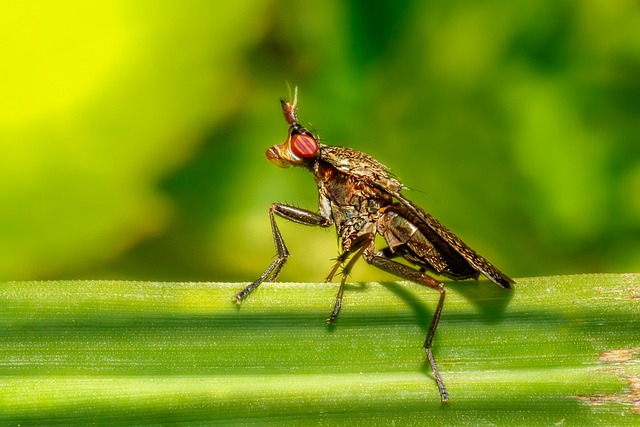Adopting eco-friendly pest control is crucial for preserving biodiversity, reducing chemical pollution, and promoting a healthier ecosystem. These solutions leverage natural substances, biological agents, and integrated pest management (IPM) strategies like beneficial insects, plant-based repellents, and proper sanitation to effectively manage pests without harming non-target organisms or the environment. Skilled professionals employ precise application techniques, such as spot treatment, to minimize off-target impacts while maintaining data-driven interventions. Regular monitoring, maintenance, and adherence to guidelines ensure optimal protection from infestations and contribute to a more sustainable environment.
In the quest for effective pest control, embracing eco-friendly solutions is a growing trend. This approach not only minimizes environmental impact but also ensures long-lasting protection for your space. Our article delves into the intricacies of achieving maximum effectiveness through expert application of eco-friendly pest control products. We explore the selection of suitable products, application techniques, and continuous monitoring for optimal results. Discover how these steps contribute to a harmonious balance between eliminating pests and preserving the environment.
Understanding Eco-Friendly Pest Control: The Basics
In today’s world, where environmental consciousness is on the rise, understanding eco-friendly pest control has become essential for both homeowners and professionals alike. Eco-friendly pest solutions refer to methods and products that are designed to minimize harm to non-target organisms, humans, and the environment while effectively managing pests. These solutions often rely on natural substances, biological agents, and integrated pest management (IPM) strategies rather than synthetic chemicals.
By adopting eco-friendly pest control practices, individuals can contribute to preserving biodiversity, reducing chemical pollution, and promoting a healthier ecosystem. Common eco-friendly methods include using beneficial insects like ladybugs and lacewings for natural pest control, applying plant-based repellents, and employing mechanical or physical strategies such as traps and barriers. Moreover, proper sanitation, regular inspection, and cultural practices play a significant role in preventing pest infestations naturally, thereby reducing the need for chemical interventions.
Choosing the Right Products for Maximum Effectiveness
When it comes to selecting pest control products, choosing eco-friendly options is a wise decision for both homeowners and businesses. In today’s world, where environmental consciousness is on the rise, opting for green alternatives ensures minimal harm to the ecosystem while still achieving effective pest management. These eco-friendly solutions often utilize natural ingredients or active substances derived from plants, offering a safer approach compared to traditional chemical pesticides.
The key to maximum effectiveness lies in understanding the specific pest issues at hand and matching them with the right products. For instance, different formulations target various pests, such as insects, rodents, or weeds. Additionally, eco-friendly pest solutions may vary in terms of application methods, including spray, powder, or baiting systems. By carefully considering these factors and selecting products tailored to their unique needs, users can achieve optimal results while maintaining a sustainable and environmentally friendly approach to pest control.
Expert Application Techniques for Optimal Results
Expert application techniques are paramount when employing eco-friendly pest solutions. Skilled professionals utilize specialized equipment and precise methods to deliver active ingredients directly to target pests, minimizing off-target impact. This ensures that beneficial insects, pets, and wildlife remain unharmed while effectively controlling unwanted invaders.
Methods like spot treatment, where pesticides are applied only in affected areas, significantly reduce environmental contamination. Trained technicians also employ advanced monitoring systems to track pest populations, allowing for targeted interventions rather than widespread applications. This data-driven approach maximizes the effectiveness of eco-friendly pest solutions, contributing to a healthier and more sustainable environment.
Monitoring and Maintenance: Ensuring Long-Lasting Protection
Regular monitoring and maintenance are essential for ensuring long-lasting protection from pests, especially when utilizing eco-friendly pest control solutions. This involves periodic inspections to identify any signs of pest activity and assess the effectiveness of the current strategies. By staying proactive, professionals can quickly address emerging issues and adjust their approach accordingly, maintaining optimal conditions that prevent pest infestations.
Maintenance also includes keeping records of treatments, understanding product labels, and adhering to application guidelines. Proper storage, disposal, and rotation of eco-friendly products are crucial for maximizing their benefits. Regular maintenance not only extends the lifespan of pest control measures but also ensures the safety and well-being of occupants and the environment.
When it comes to effective pest control, combining knowledge with eco-conscious practices is key. By understanding the fundamentals of eco-friendly methods and selecting the right products, you can achieve optimal results while minimising environmental impact. Expert application techniques and ongoing monitoring ensure these solutions remain potent over time. Adopting these strategies not only protects your space but also contributes to a greener world, proving that powerful pest control and sustainable living can go hand in hand. Embrace eco-friendly pest solutions for a healthier, more sustainable future.
